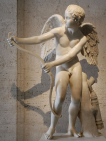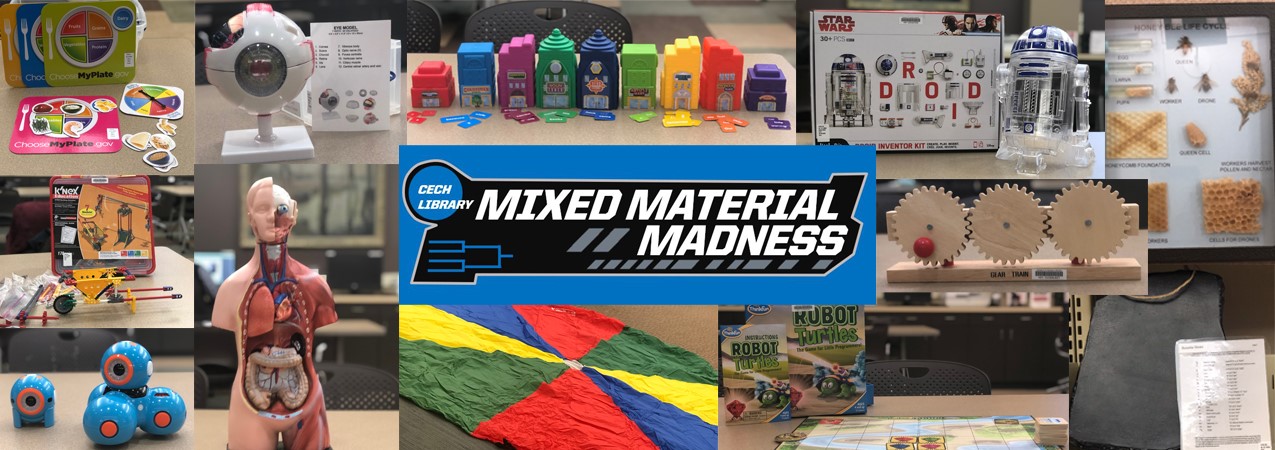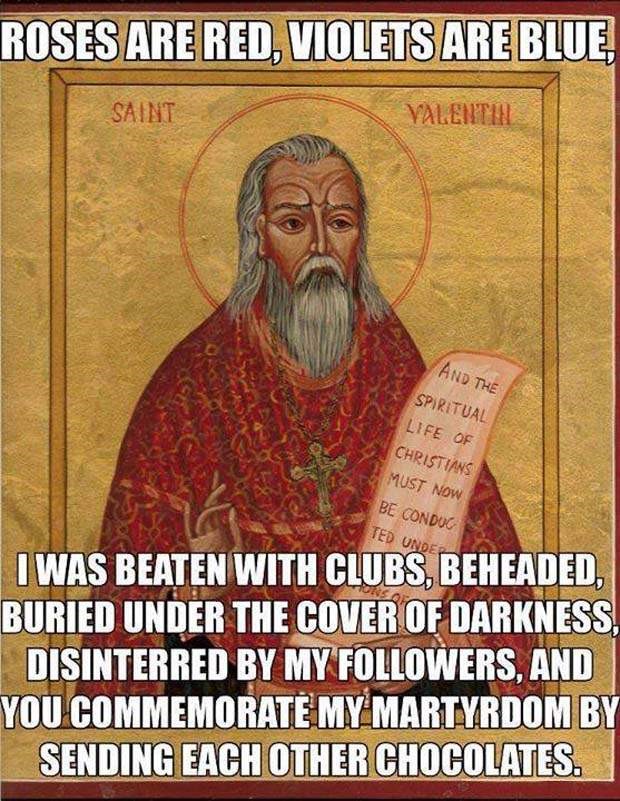The access problem to Naxos Music Library has been resolved.
Access to Naxos Music Library new site restored – Mar. 4
The access problem to Naxos Music Library has been resolved.
March Book of the Month
Your UBCA Library’s Book of the Month for March 2020
All the Light We Cannot See
By Anthony Doerr

A stunningly ambitious and beautiful novel about a blind French girl and a German boy whose paths collide in occupied France as both try to survive the devastation of World War II. Marie Laure lives with her father in Paris within walking distance of the Museum of Natural History where he works as the master of the locks (there are thousands of locks in the museum). When she is six, she goes blind, and her father builds her a model of their neighborhood, every house, every manhole, so she can memorize it with her fingers and navigate the real streets with her feet and cane. When the Germans occupy Paris, father and daughter flee to Saint-Malo on the Brittany coast, where Marie-Laure’s agoraphobic great uncle lives in a tall, narrow house by the sea wall. In another world in Germany, an orphan boy, Werner, grows up with his younger sister, Jutta, both enchanted by a crude radio Werner finds. He becomes a master at building and fixing radios, a talent that wins him a place at an elite and brutal military academy and, ultimately, makes him a highly specialized tracker of the Resistance. Werner travels through the heart of Hitler Youth to the far-flung outskirts of Russia, and finally into Saint-Malo, where his path converges with Marie-Laure. Doerr’s gorgeous combination of soaring imagination with observation is electric. Deftly interweaving the lives of Marie-Laure and Werner, Doerr illuminates the ways, against all odds, people try to be good to one another.
Is it checked out? Don’t worry, we’ve got you covered:
The Secrets We Keep (PS3616.R463 S43 2019): At the height of the Cold War, two secretaries are pulled out of the typing pool at the CIA and given the assignment of a lifetime. Their mission: to smuggle Doctor Zhivago out of the USSR, where no one dare publish it, and help Pasternak’s magnum opus make its way into print around the world. Glamorous and sophisticated Sally Forrester is a seasoned spy who has honed her gift for deceit all over the world — using her magnetism and charm to pry secrets out of powerful men. Irina is a complete novice, but under Sally’s tutelage quickly learns how to blend in, make drops, and invisibly ferry classified documents. Their story is intertwined with that of the decades-long affair between Pasternak and his mistress and muse, Olga Ivinskaya, who was sent to the Gulag and inspired Zhivago’s heroine, Lara
320 rue St Jacques : the Diary of Madeleine Blaess (ebook): In November 1939 Madeleine Blaess, a French-born, British-raised student, set off for Paris to study for a doctorate in Medieval French literature at the Sorbonne. In June 1940, the German invasion cut off her escape route to the ports, preventing her return to Britain. She was forced to remain in France for the duration of the Occupation and in October 1940 began to write a diary. Intended initially as a replacement letter to her parents in York, she wrote it in French and barely missed an entry for almost four years.
Madeleine’s diary is unique as she wrote it to record as much as she could about everyday life, people and events so she could use these written traces to rekindle memories later for the family from whom she had been parted. Many diaries of that era focus on the political situation. Madeleine’s diary does reflect and engage with military and political events. It also provides an unprecedented day-by-day account of the struggle to manage material deprivation, physical hardship, mental exhaustion and depression during the Occupation. The diary is also a record of Madeleine’s determination to achieve her ambition to become a university academic at a time when there was little encouragement for women to prioritise education and career over marriage and motherhood. Her diary is edited and translated here for the first time.
The Last Metro (streaming film): Gérard Depardieu and Catherine Deneuve star as members of a French theater company living under the German occupation during World War II in François Truffaut’s gripping, humanist character study. Against all odds, a Jewish theater manager in hiding; a leading man who’s in the Resistance; increasingly restrictive Nazi oversight, the troupe believes the show must go on. Equal parts romance, historical tragedy, and even comedy, The last metro (Le dernier métro) is Truffaut’s ultimate tribute to art overcoming adversity.
by Christian Boyles
Coronavirus Disease 2019 (COVID-19) Resource Guide

Are you looking for current and reliable information about the Coronavirus? Check out the Coronavirus Disease 2019 (COVID-19) guide https://guides.libraries.uc.edu/covid-19 .
The guide includes:
- Direct links to COVID-19 pages at the Centers for Disease Control and Prevention (CDC), the World Health Organization (WHO), the National Library of Medicine (NLM) and more.
- Updates, resources for healthcare professionals, and current articles provided by The Lancet, The New England Journal of Medicine, JAMA Network, and more.
- Visualization of global cases by Johns Hopkins CSSE
- State and county health COVID-19 resources
The Coronavirus Disease 2019 (COVID-19 guide is now available from the Health Sciences Library (HSL) website. On the HSL landing page, click on Medical Campus Resources under HSL Resources to see the guide at the top of the list.
Mixed Materials Madness at CECH Library
College basketball season is coming to a close, and the CECH Library has a new take on the classic March Madness tournament bracket — Mixed Materials Madness 2020! Each week in March some of our best mixed materials kits will face off in a head-to-head tournament to choose the year’s fan favorite. The winners of these match-ups will be determined weekly by popular vote of our library users. We encourage everyone to fill out a bracket AND to vote on their favorite mixed materials each week.
So what are mixed materials? Mixed materials are dynamic instructional materials, specifically curated to support a wide variety of PK-12 curricula. At CECH Library, mixed materials include kits, games, models, puppets, posters, and more. Mixed materials may be checked out by anyone at UC for a period of 3 weeks.
Stop by the information desk at the CECH Library to fill out and drop off your bracket by March 4th. If you select the winner, you’ll will be entered in a drawing to win a Starbucks gift card.
Your CECH Library Mixed Material Elite Eight
- Rosetta Stone Model
- Counting Cookies
- Honeybee Life Cycle Model
- Eye Model
- Tumble Trax Marble Run
- Parachute
- Gear Train (Simple Machine)
- Star Wars Droid Robot
Haley Shaw, Temporary Librarian
CECH Library
UC Libraries Seeks Books Good Enough to Eat for the International Edible Books Festival
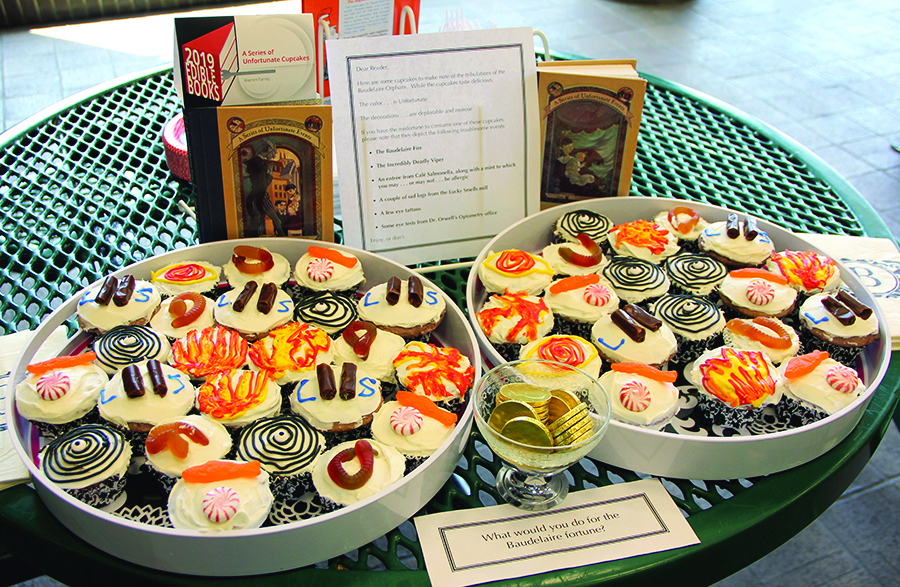
2019 Best Overall – A Series of Unfortunate Cupcakes by the Warren Family
Know of a good book to eat?! Create an Edible Book for UC Libraries International Edible Books Festival!
It’s time once again for the fan-favorite International Edible Books Festival scheduled for Wednesday, April 1, 2020, from 1-2:00 p.m. on the Walter C. Langsam Library’s 4th floor. UC Libraries is seeking people interested in creating an edible book for the enjoyment (and consumption) of all in attendance. There are few restrictions – namely that your creation be edible and have something to do with a book – so you may let your creativity run wild.
 As in previous years, entries will be judged according to such categories as “Most Delicious,” “Most Creative,” “Most Checked Out” and “Most Literary.” Those awarded “Best Student Entry” and “Best Overall” will win a limited-edition, much coveted UC Libraries t-shirt.
As in previous years, entries will be judged according to such categories as “Most Delicious,” “Most Creative,” “Most Checked Out” and “Most Literary.” Those awarded “Best Student Entry” and “Best Overall” will win a limited-edition, much coveted UC Libraries t-shirt.
If you are interested in creating an edible book, please e-mail melissa.norris@uc.edu by Friday, March 20 with your name and the title of your creation.
Looking for inspiration? Visit UC Libraries on Facebook to see photos from the 2019 festival.
Read Source, the online newsletter, to learn more about the news, events, people and happenings in UC Libraries.
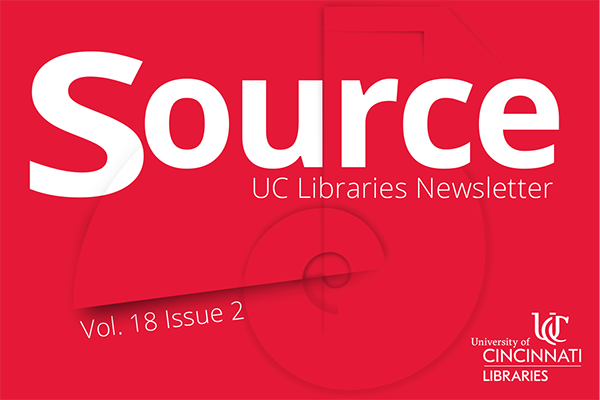 Read Source, the online newsletter, to learn more about the news, events, people and happenings in UC Libraries.
Read Source, the online newsletter, to learn more about the news, events, people and happenings in UC Libraries.
In this issue of Source, Dean Xuemao Wang writes about how a digital core is part of a 21st-century liberal education.
Two exhibits that highlight women who fought for equality are featured in this issue along with an article by Kevin Grace, university archivist and head of the Archives and Rare Books Library, who writes of Mark Twain’s relationship with Cincinnati, including that quote attributed to Twain about where he hopes to be when the world ends.
This issue announces the exciting comeback of the former popular Authors, Editors & Composers exhibit that will combine with the current Life of the Mind lecture to form one event that will celebrate the achievements of UC’s artists, authors, editors & composers. We announce the 5th University of Cincinnati Libraries Annual Progress Report – A Year of Reflection.
Lastly, we announce two upcoming events – the second Hidden Treasures: An Adopt-A-Book Evening on March 12 and the upcoming annual Cecil Striker Lecture to focus on Dr. Christian R. Holmes and scheduled for May 7.
Read these articles, as well as past issues, on the web at http://libapps.libraries.uc.edu/source/ and via e-mail. To receive Source via e-mail, contact melissa.norris@uc.edu to be added to the mailing list.
Introducing the Kretschmer Collection of Native American Children’s Literature
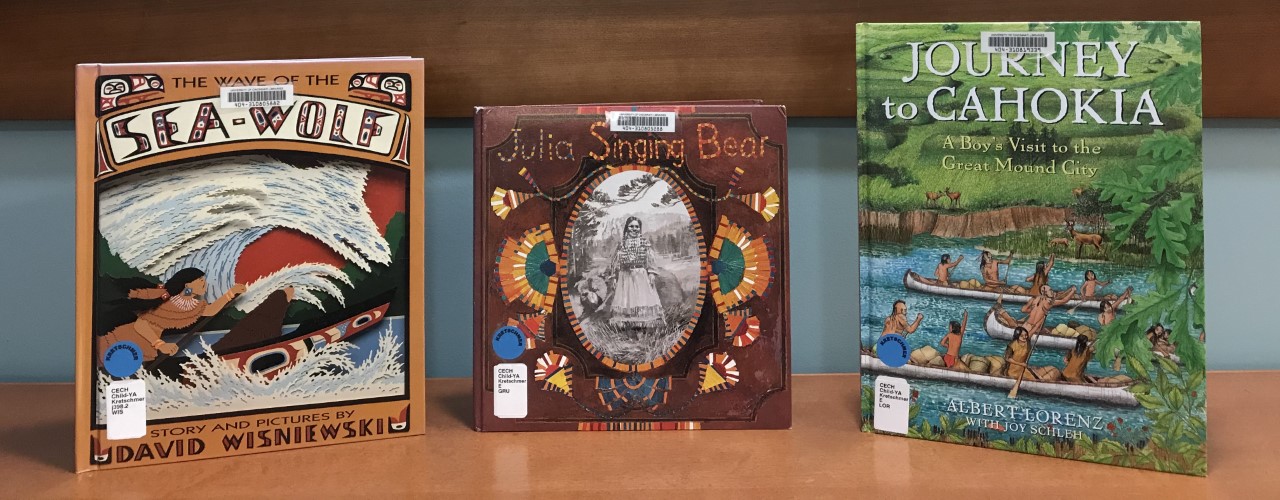
CECH Library is home to the Kretschmer Collection, an amalgamation of over 275 books about indigenous cultures written and/or illustrated by Native Americans. Collected by Professors Emeriti Richard and Laura Kretschmer, these books were graciously donated so that many could benefit from their powerful messages and thought-provoking stories. Fiction and non-fiction titles offer a variety of reading levels that can appeal to nearly every age group.
The collection, with its range of subjects and levels, serves to encourage learning about native cultures among our community. As education is among the best ways to combat prejudice and inequality, the collection and its themes can contribute to broadening the perspectives of communities locally and across the United States. Themes present in these books include language, family, nature, religion, and resilience.
You can explore the many brilliant books of the Kretschmer Collection on the third floor of the CECH Library, located in the Teachers-Dyer Complex 300.
Sara Polk, CECH Library Student Assistant
A&S Anthropology & Archaeology, 2020
Preserving University Websites through Web Archiving
 All of us have experienced clicking on a link and receiving an error, or 404 notice. Web pages are notoriously fragile documents, and many of the web resources we take for granted are at risk of disappearing. In one case study, archivists who were preserving the hashtags related to the Charlie Hebdo attacks in Paris found that just a few months later, between 7 and 10% of tweets had been deleted. The average life span of a webpage is between 44 and 100 days. And even if you think that we won’t really lose much in the long run if we don’t get every website of interest preserved – the issue of “link rot” is a big deal, as half of all URLs in Supreme Court opinion citations are now dead.
All of us have experienced clicking on a link and receiving an error, or 404 notice. Web pages are notoriously fragile documents, and many of the web resources we take for granted are at risk of disappearing. In one case study, archivists who were preserving the hashtags related to the Charlie Hebdo attacks in Paris found that just a few months later, between 7 and 10% of tweets had been deleted. The average life span of a webpage is between 44 and 100 days. And even if you think that we won’t really lose much in the long run if we don’t get every website of interest preserved – the issue of “link rot” is a big deal, as half of all URLs in Supreme Court opinion citations are now dead.
Web archiving overcomes these issues of obsolescence through thoughtful planning and curation of organizationally and historically valuable web content. Most web archiving today takes place through third-party services such as WebRecorder or Archive-It. To archive a website, you have to supply the URL of the website and give the web archiving service instructions about what you want to capture, and how many links below the main page you want the service to “crawl”. Web archiving is not simply “saving as a PDF” or taking a screenshot of a website. Because of the dynamic nature of most modern websites, their embedded media, interactive options, and rapidly changing nature, adequately capturing a website so that a user can interact with the archival file requires creating a WARC file. Web archiving services created files known as WARCs, which is a standardized file format for creating archival web content. Implementing web archiving services addresses several critical archives and records use cases.
A web archiving subscription service such as Archive-It offers both a preservation tool and collection development tool in one: the archivist can use the service to “crawl” a website in order to create a WARC file, and then the service also allows the archivist to present these resources to the public for research through the Internet Archive’s Archive-It website, which is currently used by over 60 ARL research libraries.
At the Archives and Rare Books Library, we have started using Archive-It to begin preserving important university websites. We’re just getting started, but so far we are prioritizing preserving the websites for the Board of Trustees, President, and Provost. All of these websites host important minutes, reports, documents, and other information that is important to retain for university archives. We are also capturing copies of “endangered” websites on the uc.edu – websites that may be going offline in the near future, but which have important university history embedded in them (you can see an example here).
Down the road, we’ll be expanding last year’s pilot project to collect websites from student organizations in order to fill in some of our archival gaps reflecting the student experience. You can see our pilot project collection here.
Do you have any ideas about important university websites that ought to be crawled? If so, contact Eira Tansey, ARB’s Digital Archivist via email at eira.tansey@uc.edu or 513-556-1958.
Happy Valentine, Greeks and Romans!
February is a rainy but also lovable month, so curling up with poetry is perfect. Many ancient poems expressed love in its many forms. For example,
Love of nature as longingly expressed by the great Roman poet Vergil in his Eclogue 1:
“…fortunate senex, hic inter flumina notaet fontis sacros frigus captabis opacum. hinc tibi, quae semper, vicino ab limite saepes Hyblaeis apibus florem depasta salicti saepe levi somnum suadebit inire susurro; hinc alta sub rupe canet frondator ad auras: nec tamen interea raucae, tua cura, palumbes, nec gemere aëria cessabit turtur ab ulmo” (Ecl. 1.51-58).
“…happy old man! Here, amid familiar streams and sacred springs, you shall enjoy the cooling shade. On this side, as of old, on your neighbor’s border, the hedge whose willow blossoms are sipped by Hybla’s bees shall often with its gentle hum soothe you to slumber; on that, under the towering rock, the woodman’s song shall fill the air; while still the cooing wood pigeons, your pets, and the turtle dove shall cease not their moaning from the elm tops.”

Or the touching love of a dog in Homer’s Odyssey (hey Mike!):
“…ἂν δὲ κύων κεφαλήν τε καὶ οὔατα κείμενος ἔσχεν, Ἄργος, Ὀδυσσῆος ταλασίφρονος… ἔνθα κύων κεῖτ᾿ Ἄργος, ἐνίπλειος κυνοραιστέων. δὴ τότε γ᾿, ὡς ἐνόησεν Ὀδυσσέα ἐγγὺς ἐόντα οὐρῇ μέν ῥ᾿ ὅ γ᾿ ἔσηνε καὶ οὔατα κάββαλεν ἄμφω, ἆσσον δ᾿ οὐκέτ᾿ ἔπειτα δυνήσατο οἷο ἄνακτοςἐλθέμεν…” (17. 290-291; 302-304).
“…and a dog that lay there raised his head and pricked up his ears, Argus, steadfast Odysseus’ dog… There lay the dog Argus, full of dog ticks. But now, when he became aware that Odysseus was near, he wagged his tail and dropped both ears, but nearer to his master he had no longer strength to move…”
Or the love of a cow for her newborn calf when he is brutally taken away to be sacrificed (or raised for veal) in Lucretius:
“…nam saepe ante deum vitulus delubra decora turicremas propter mactatus concidit aras, sanguinis expirans calidum de pectore flumen; at mater viridis saltus orbata peragrans quaerit humi pedibus vestigia pressa bisulcis, omnia convisens oculis loca si queat usquam conspicere amissum fetum, completque querellis frondiferum nemus adsistens et crebra revisit ad stabulum desiderio perfixa iuvenci; nec tenerae salices atque herbae rore vigentes fluminaque illa queunt summis labentia ripis oblectare animum subitamque avertere curam, nec vitulorum aliae species per pabula laeta derivare queunt animum curaque levare: usque adeo quiddam proprium notumque requirit…” (2.352-366).
“…for often in front of the noble shrines of the gods a calf falls slain beside the incense-burning altars, breathing up a hot stream of blood from his chest; but the mother, bereaved, wanders through the green glens, and knows the prints marked on the ground by the cloven hooves, as she surveys all the regions if she may espy somewhere her lost offspring, and coming to a stand fills the leafy woods with her moaning, and often revisits the stall pierced with yearning for her young calf; nor can tender willow-growths, and grass growing rich in the dew, and those rivers flowing level with their banks, give delight to her mind and rebuff that care which has entered there, nor can the sight of other calves in the happy pastures divert her mind and lighten her load of care: so persistently she seeks for something of her own that she knows well…”
Or the love of a woman as expressed by the greatest of the Ancient Greek lyric poets, Sappho:
“…ὠς γὰρ ἔς σ᾿ ἴδω βρόχε᾿, ὤς με φώναισ᾿ οὐδ᾿ ἒν ἔτ᾿ εἴκει, ἀλλὰ κὰμ μὲν γλῶσσᾴ <μ᾿> ἔαγε, λέπτονδ᾿ αὔτικα χρῷ πῦρ ὐπαδεδρόμηκεν, ὀππάτεσσι δ᾿ οὐδ᾿ ἒν ὄρημμ᾿, ἐπιρρόμβεισι δ᾿ ἄκουαι, κὰδ δέ μ᾿ ἴδρως κακχέεται, τρόμος δὲπαῖσαν ἄγρει, χλωροτέρα δὲ ποίας ἔμμι…” (frag. 31.7-14).
“…for when I look at you for a moment, then it is no longer possible for me to speak; my tongue has snapped, at once a subtle fire has stolen beneath my flesh, I see nothing with my eyes, my ears hum, sweat pours from me, a trembling seizes me all over, I am greener than grass…”
Or the love of a man as passionately expressed by Roman poet Catullus (and to the delight of all school children studying Latin)
https://www.loebclassics.com/view/catullus-poems/1913/pb_LCL006.7.xml?result=1&rskey=Fz5uL7
“…da mi basia mille, deinde centum, dein mille altera, dein secunda centum, deinde usque altera mille, deinde centum dein, cum milia multa fecerimus, conturbabimus illa, ne sciamus, aut nequis malus invidere possit, cum tantum sciat esse basiorum…” (5)
“…give me a thousand kisses, then a hundred, then another thousand, then a second hundred, then yet another thousand, then a hundred. Then, when we have made up many thousands, we will confuse our counting, that we may not know the reckoning, nor any malicious person blight them with evil eye, when he knows that our kisses are so many…”
Or one of the many rather twisted and often sad love stories in Ovid’s Metamorphoses — Pyramus and Thisbe, Apollo and Daphne, Orpheus and Eurydice and countless others:
https://www.loebclassics.com/view/ovid-metamorphoses/1916/pb_LCL042.3.xml?rskey=XVZ0kK&result=3
“Pyramus et Thisbe, iuvenum pulcherrimus alter, altera, quas Oriens habuit, praelata puellis, contiguas tenuere domos, ubi dicitur altam coctilibus muris cinxisse Semiramis urbem. notitiam primosque gradus vicinia fecit, tempore crevit amor; taedae quoque iure coissent, sed vetuere patres: quod non potuere vetare, ex aequo captis ardebant mentibus ambo. conscius omnis abest; nutu signisque loquuntur, quoque magis tegitur, tectus magis aestuat ignis…” (Met. 4.55-64).
“Pyramus and Thisbe—he, the most beautiful youth, and she, loveliest maid of all the East—dwelt in houses side by side, in the city which Semiramis is said to have surrounded with walls of brick. Their nearness made the first steps of their acquaintance. In time love grew, and they would have been joined in marriage, too, but their parents forbade. Still, what no parents could forbid, sore smitten in heart they burned with mutual love. They had no go-between, but communicated by nods and signs; and the more they covered up the fire, the more it burned.”
Or that of Cupid (Amor) himself and Psyche in Apuleius:
“…centies moriar quam tuo isto dulcissimo conubio caream. Amo enim et efflictim te, quicumque es, diligo aeque ut meum spiritum, nec ipsi Cupidini comparo…” (Met. 5.6)
“…I would rather die a hundred times than be robbed of your sweet caresses. For I love and adore you passionately, whoever you are, as much as my own life’s breath, and I would not even compare Cupid himself with you…” [what Psyche does not know is that it is Cupid himself who caresses her]
Happy Reading!
